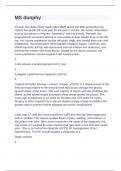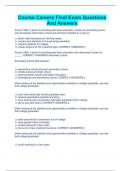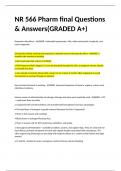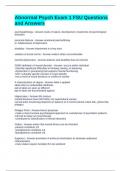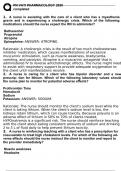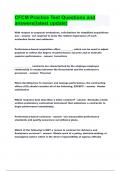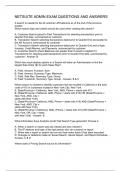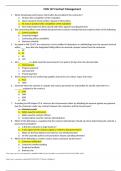Exam (elaborations)
MS dunphy Question and answers correctly solved
- Course
- Institution
MS dunphy Question and answers correctly solved 13-year-old obese (body mass index [BMI] above the 95th percentile) boy reports low-grade left knee pain for the past 2 months. He denies antecedent trauma but admits to frequent "horseplay" with his friends. The pain has progressively worsened, an...
[Show more]
